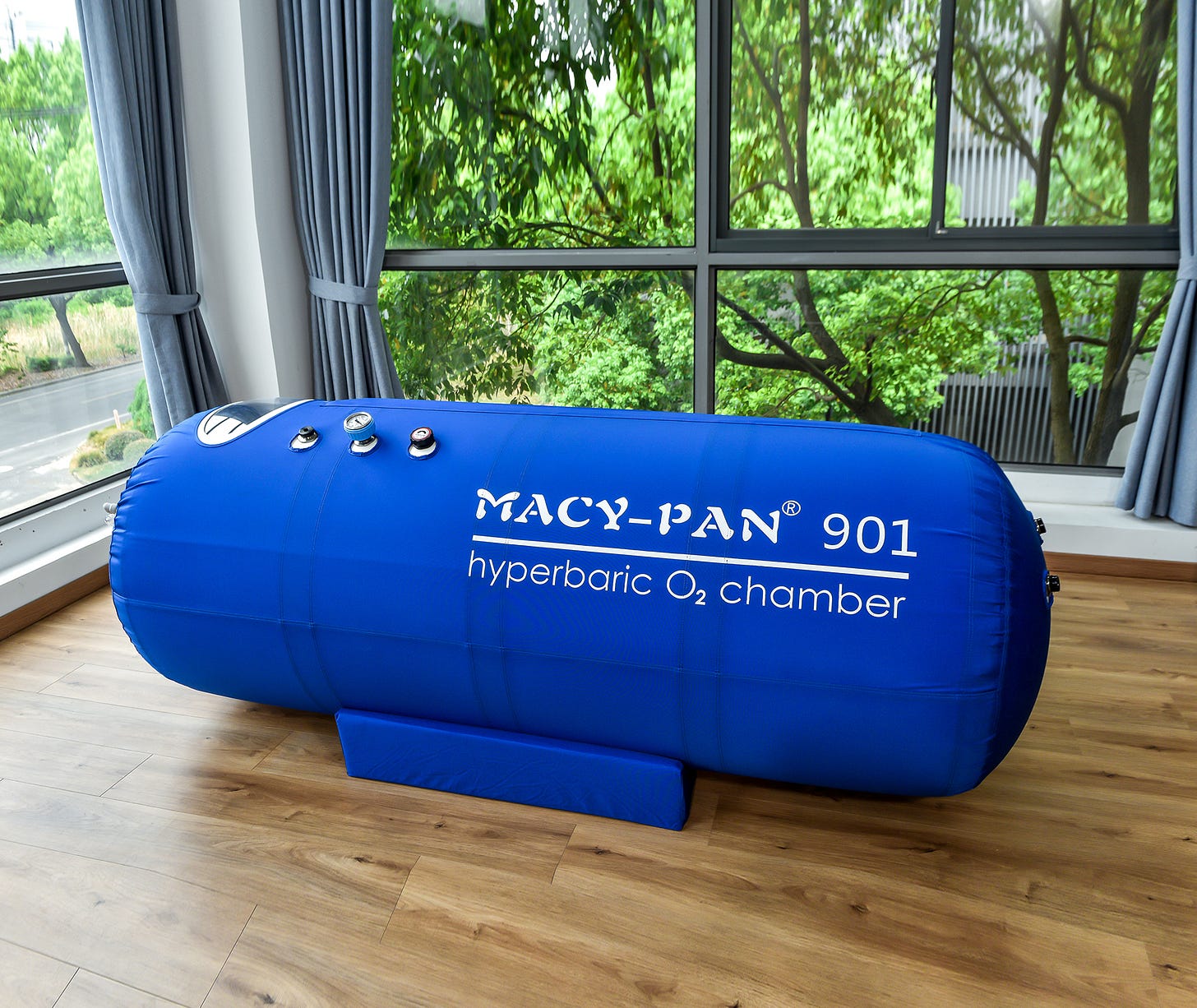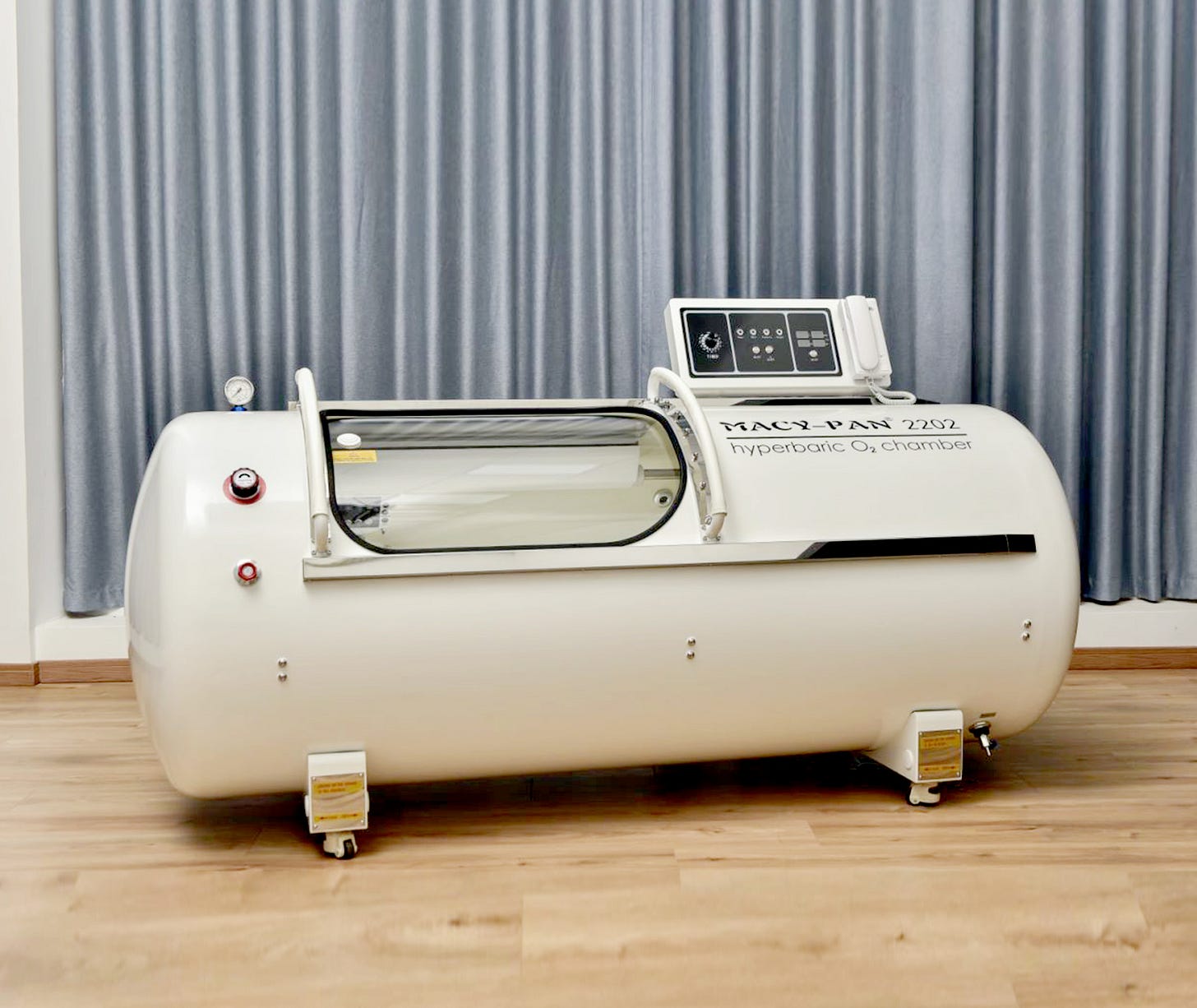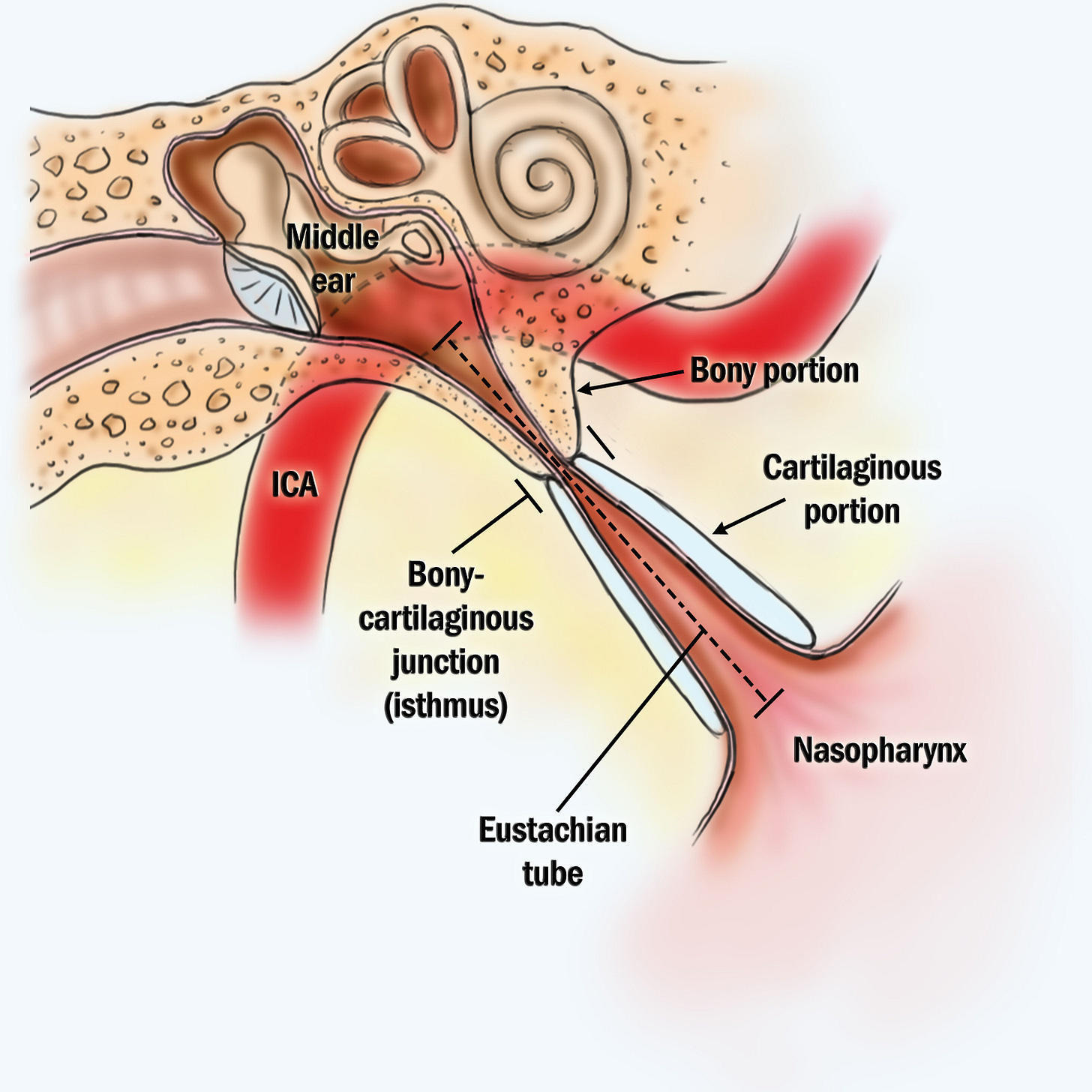Hyperbaric Oxygenation Therapy saves the day

If you’re dealing with chronic and degenerative health issues, Long COVID, autonomic imbalances and/or connective tissue disorders that make daily life in the 21st Century an insurmountable challenge, this post is for you.
Even when you feel that you’re all out of options, there’s always something else worth trying. Knowledge and awareness is the key. Though you may have already given up hope of ever achieving or regaining good health, I’ve seen people achieve just that by anticipating the worst while also being proactive to avoid the worst. It requires being vigilant, and perhaps even a little paranoid.
As I know too well, there’s often persistent chronic anxiety in people with connective tissue disorders and associated syndromes. However, a state of constant awareness, proactive thinking, acquisition of knowledge on a daily basis, and response-ability go a long way towards dissipating anxiety and diminishing health issues. Knowledge and awareness are universal creative and healing principles.
Depending on your location and budget, a number of “rescue remedies” are readily available. There are currently several options, all with a relatively high success rate, that could be tried without risking exacerbation of issues. Let’s start with HBOT.
Hyperbaric Oxygenation Therapy (HBOT)
Hyperbaric oxygenation therapy (HBOT) delivers 100% oxygen in a pressurized chamber. As the pressure inside the chamber increases, more oxygen can be delivered into the blood, increasing tissue oxygenation.
My loved ones and I often joke that we were genetically wired to live in a world with higher oxygen availability. We knew we wanted to do this therapy badly enough and, as there was literally nowhere near us that offered it, we decided to pool some resources and buy a soft-case home unit from China.
It was so immensely helpful to virtually everybody who tried it, regardless of their issues, that we got a second unit – this time a hard case, which can pressurize up to 2.0 ATA. Dealing with the import bureaucracy was worth it. Short of being pregnant or afflicted with a condition like a pneumothorax (which some of the rarest types of Ehlers-Danlos cases actually have), almost everyone can try this therapy at some point in their lives. Even claustrophobic folks can try some of the tricks used in MRI centers to put themselves at ease.

Around thirty to sixty sessions, one hour in duration, at 1.5 or 2.0 ATA would stabilize even the most recalcitrant health problems. It’s very useful for exacerbation attacks resulting from the COVID-19 era or “common” infections that trigger crises with fatigue, sleep disorders, mastocytosis, etc. Shortened deep sleep, which is systemically present in those with perpetual connective tissue disorders, is improved with HBOT.
A tendency towards sleepiness can be observed during the first few sessions and must not be resisted. It’s much needed healing that takes place when you sleep. After a few sessions, though, one’s energy finally returns. Complemented with high-flow oxygen therapy, better results can be achieved.
It’s been noted that, besides the oxygen therapy provided by HBOT, the pressure in the chamber has an excellent effect on connective tissue. A man’s biological clock was unintentionally set back 10 years after 93 days living under the ocean in a research station.
[H]is body’s natural stem cell count — which grew 1,000% higher from before he went under. He experienced a 60% increase in the duration of deep sleep, the truly restorative state of sleep we all need to maintain our health that typically makes up around 90 minutes of our sleep cycle.
“However, pressure, such as is found within a therapeutic hyperbaric oxygen chamber, has been shown to have several benefits which living under the pressure of the waves seems to have replicated.”
A sure way then to get back your deep sleep, which can jump start the healing process at multiple different levels.
Personal Experience
Truth be told, in my case, it took around 35 sessions before I finally saw some light at the end of the tunnel. My context was major connective tissue problems exacerbated by the COVID-19 era. I felt exhausted all the time. My other problems stemming from auto-immune issues, which I used to consider severe, were manageable by comparison. By August 2022, amidst the COVID-19 hystericization, I had this to say about HBOT at 1.5 ATA:
I’ve done 56 HBOT sessions, the first 8 spread throughout the week at a rate of two or three times per week. These only made me feel worse and more inflamed. After a break of a couple of weeks or so, I then did about 44 sessions, almost consecutively, except for one or two days a week when I just didn’t have the time and/or there were not enough hours in the day.
The first 35 sessions or so made me feel very tired. Initially, I felt even more inflamed. Slowly but surely, I was feeling better despite the need to rest and sleep. The following 10 sessions showed me that there is no doubt HBOT at 1.5 ATA for one hour works, even when you have to do a bunch of sessions to finally reap the benefits. I have fewer allergies, better energy levels, less pain and better focus. I felt like finally I didn’t have to drag myself around daily events, that I actually had some energy for awareness.
I had a break for 10 days or so and almost immediately my energy levels came down, but nothing like before. I restarted my sessions again and finally feel like I’m getting back on track.
It’s definitely a something worth investing in.
Research Studies
HBOT reduces oxidative stress and chronic inflammation, improves endothelial dysfunction, and thereby alleviates symptoms associated with Long COVID and connective tissue anomalies.
The combined action of oxygen and hyperbaric pressure can trigger oxygen- and pressure-sensitive genes, resulting in a stimulation of regenerative healing processes, including stem-cell proliferation and mobilization of anti-inflammatory and neuroplasticity factors.
HBOT increases brain blood flow in regions where it’s lessened, therefore improving cognitive function. Moreover, HBOT improves mitochondrial function and promotes muscle strength, which is often a problem in people with connective tissue anomalies. No matter what they do, they don’t seem to put on muscle mass.
Research shows significant improvement in fatigue, global cognition, executive function, attention, information processing speed, and verbal function. There’s also marked improvement in shortness of breath, joint and muscle pain, feelings of anxiety and depression, and overall perceived pain. Increased strength, fitness, and flexibility are also part of the improvement.
Significant improvement in working memory and concentration is also observed, and most important, data shows that improvements persisted even after the completion of all HBOT sessions.
There’s an improvement in quality of life, improved physical performance, overall well-being, and energy levels, muscle or joint pain resolution, and improved sleep quality, emotional well-being and social functioning.
There’s imaging showing increased neural integration and brain network connectivity, which goes along with the improved cognitive function and increased emotional regulation, thus reducing psychiatric symptoms. Improved work efficiency scores and even increased heart function have also been observed.
In a study where HBOT was shown to induce neuroplasticity and improved cognitive, psychiatric, fatigue, sleep and pain symptoms of patients suffering from Long COVID, they used this as a protocol:
The HBOT protocol included breathing 100% oxygen by mask at 2ATA for 90 min with five-minute air breaks every 20 min. Compression/decompression rates were 1.0 m/min. The sham protocol included breathing 21% oxygen by mask at 1.03 ATA for 90 min.
In another study showing better attention, information processing speed and executive functions, which normally decline with aging, the following protocol was used:
The protocol comprised of 60 daily sessions, 5 sessions per week within a three month period. Each session included breathing 100% oxygen by mask at 2ATA for 90 minutes with 5-minute air breaks every 20 minutes. Compression/ decompression rates were 1 meter/minute. The control arm received no active intervention as a no-contact group. During the trial, neither lifestyle and diet changes, nor medications adjustments were allowed for either group.
ENT Troubleshooting
A note for those who are not able to do HBOT due to persistent inner ear problems (pain in the ears as the HBOT is pressurizing, despite taking precautions): the outlet of the inner ear to the throat is called Eustachian tube, and it is a very thin outlet:

If you have problems equalizing the pressure of the inner ear while doing HBOT, you can try autoinsufflation (exhaling through your nose while the nose is pinched). If the problem persists, then you have to find out why.
There are two main causes for Eustachian tube dysfunction:
1) “Obstructive dysfunction,” when the valve fails to open.
2) Valve incompetency leading to a persistent opened state, which is termed “patulous dysfunction.”
Eustachian tube dysfunction is a clinical diagnosis, mainly based on history and physical examination. Distinguishing the cause of the dysfunction is important because treatment is completely different depending on the cause. Obstructive dysfunction is characterized by hearing loss and tympanic membrane retraction or middle ear effusion. Patulous dysfunction is characterized by autophony (hearing one’s own voice and breathing sounds), yet there is no complaint of hearing loss and the tympanic membrane appears normal.
There are many causes of obstructive dysfunction (including rhinosinusitis, allergic rhinitis, and tumors), and each will respond to specific treatment. In the absence of an underlying mechanical cause for obstructive dysfunction, systemic decongestants such as pseudoephedrine or phenylephrine may be helpful for congestive symptoms (e.g., ear fullness or pressure). Be careful with nasal decongestants as they induce dependency and, in the long-run, can make the problem worse.
If you have allergies, try anti-histaminics before going into the chamber, such as desloratadine, loratadine, cetirizine, ebastine or benadryl.
Treatment of patulous dysfunction includes hydration and medications to thicken either the mucus or the mucosa. Decongestants should be avoided because they are not effective and may worsen the problem.
In short, autoinsufflation should work after some training and trying. If not, a decongestant could be tried and an allergy pill. If the problem persists, more detective work needs to be done.
References
Catalogna M, Sasson E, Hadanny A, Parag Y, Zilberman-Itskovich S, Efrati S. Effects of hyperbaric oxygen therapy on functional and structural connectivity in post-COVID-19 condition patients: A randomized, sham-controlled trial. Neuroimage Clin. 2022;36:103218. doi: 10.1016/j.nicl.2022.103218. Epub 2022 Oct 3. PMID: 36208548; PMCID: PMC9528018.
Hadanny A, Zilberman-Itskovich S, Catalogna M, Elman-Shina K, Lang E, Finci S, Polak N, Shorer R, Parag Y, Efrati S. Long term outcomes of hyperbaric oxygen therapy in post covid condition: longitudinal follow-up of a randomized controlled trial. Sci Rep. 2024 Feb 15;14(1):3604. doi: 10.1038/s41598-024-53091-3. PMID: 38360929; PMCID: PMC10869702.
Wu, B.-Q., Liu, D.-Y., Shen, T.-C., Lai, Y.-R., Yu, T.-L., Hsu, H.-L., Lee, H.-M., Liao, W.-C., & Hsia, T.-C. (2024). Effects of Hyperbaric Oxygen Therapy on Long COVID: A Systematic Review. Life, 14(4), 438. https://doi.org/10.3390/life14040438
Zilberman-Itskovich S, Catalogna M, Sasson E, Elman-Shina K, Hadanny A, Lang E, Finci S, Polak N, Fishlev G, Korin C, Shorer R, Parag Y, Sova M, Efrati S. Hyperbaric oxygen therapy improves neurocognitive functions and symptoms of post-COVID condition: randomized controlled trial. Sci Rep. 2022 Jul 12;12(1):11252. doi: 10.1038/s41598-022-15565-0. PMID: 35821512; PMCID: PMC9276805.
ShareNOV



About the Author:
A countryside family medicine doctor and former heart surgeon in service of the Hippocratic Oath.